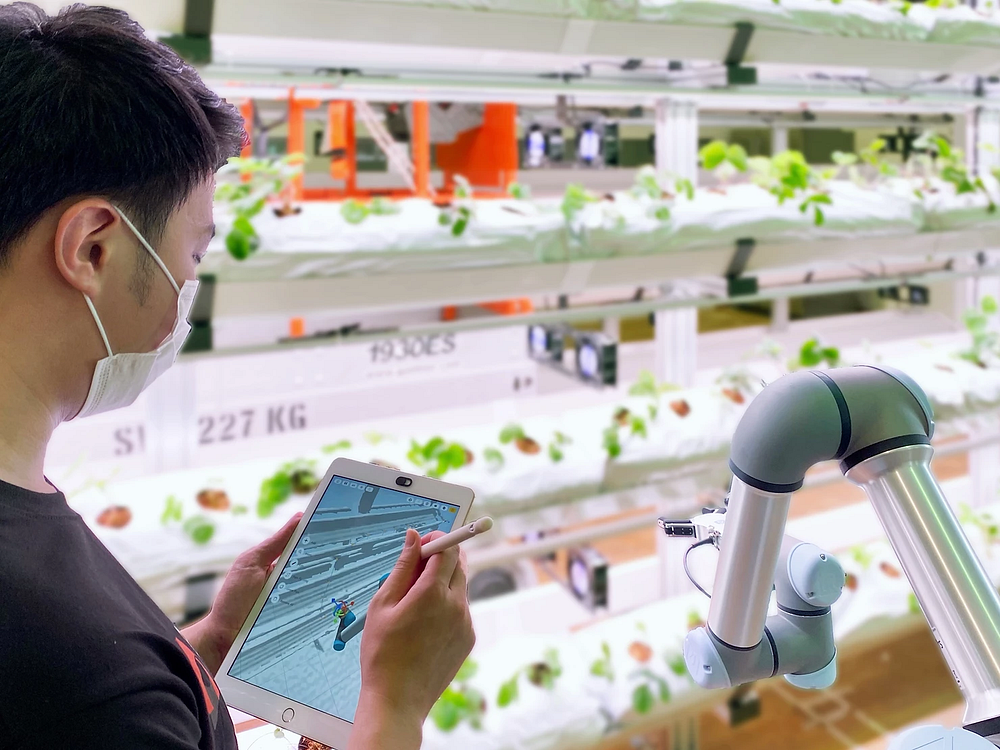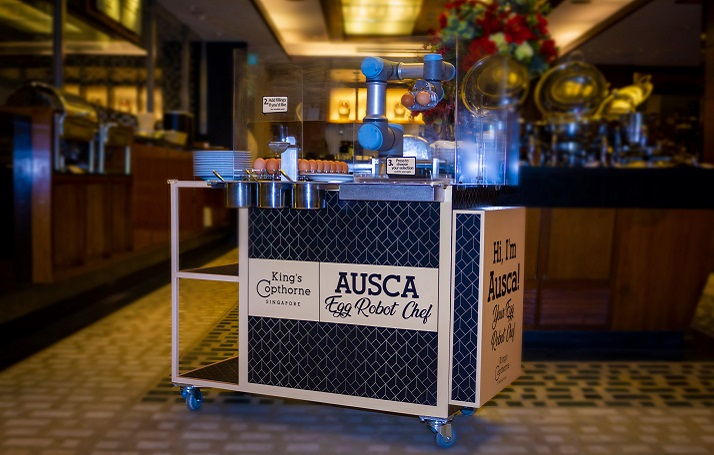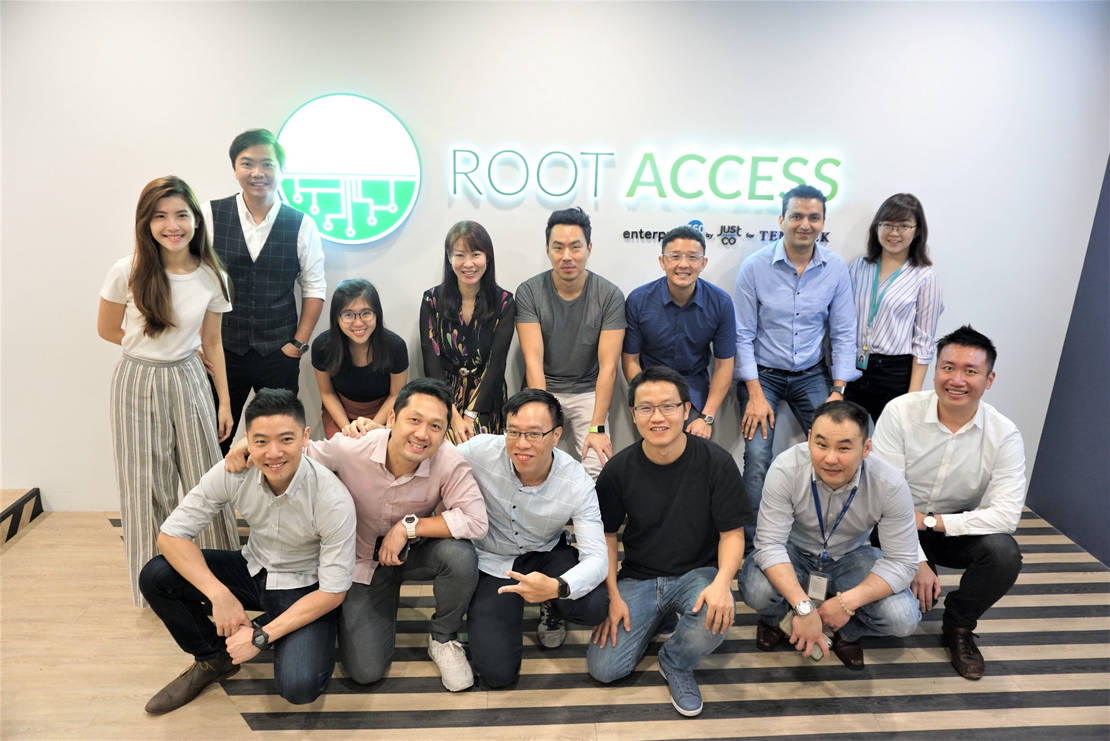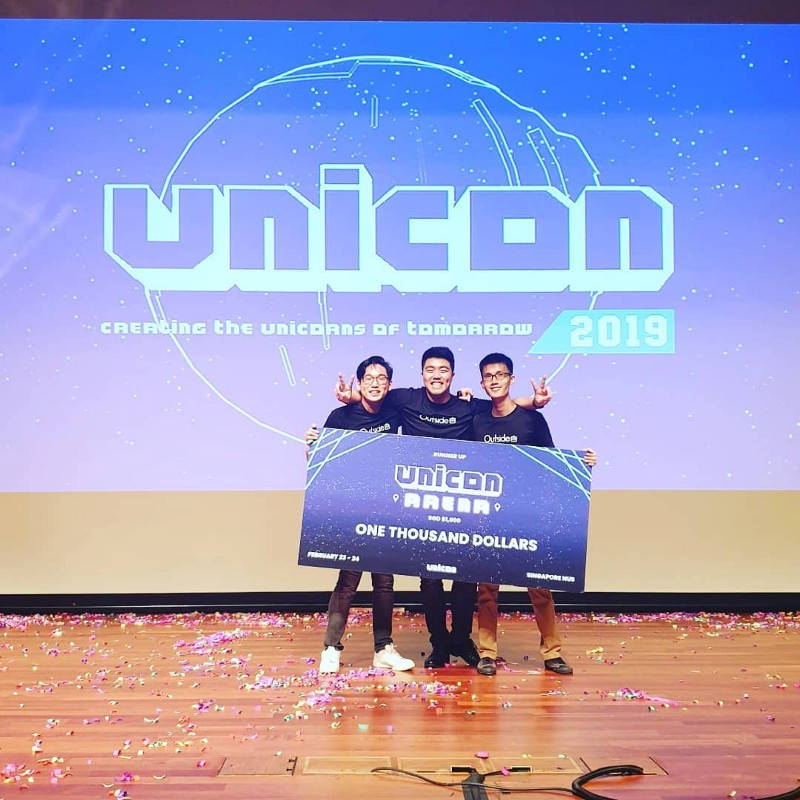For years, humans have been worried about job loss due to automation. According to the Oxford Economics, automation could displace 20 million manufacturing jobs by 2030. While automation reshapes the world’s employment landscape, this is not unexpected. Throughout history, we have seen examples of technology replacing jobs. For instance, the U.S. rail industry which once employed more than a million workers, fell below 200,000 employees in 2019 since the 1940s with embracing new technologies and automation being one of the key reasons.
Traditionally, automation has been associated with big chunky metal pieces performing dirty, dull and dangerous tasks in an isolated environment. However, in recent years we have seen a new breed of robots being introduced into work spaces to work alongside and collaborate with humans; changing the way we work.
Collaborative robots, also known as cobots are designed to interact with humans and take over repetitive, menial tasks instead of displacing workers.
Cobots have been gaining popularity as full automation is not always desirable. While industrial robots might be more efficient, cobots allow for flexibility and alteration in processes which are lacking in industrial robots.
You might think that cobots are only being introduced to support low-skilled roles but they have been transforming industries such as hospitality, medicine and law as well. A study by Mckinsey has demonstrated that with technologies available today, 60 percent of all occupations could see at least one third of their constituent activities automated. Of course, the potential for automation differs across industries and roles. Besides technical feasibility, other factors such as the cost it takes to develop and implement the automation, cost of workers that are currently performing the tasks and probability of better performance would affect the chances and degree of automation occurring.
Nevertheless, it is clear that automation at work can’t be avoided. So, let’s take a look at how we can set ourselves up for the future of work.
Our roles will change
AUSCA — the robot chef deployed at Copthorne King’s Hotel Singapore
While going for a holiday seems quite far away from us now, the Millennium Hotels in Singapore have previously introduced AUSCA, the cobot that helps to prepare eggs for the morning breakfast crowd. Under the Hotel Job Redesign Initiative, five pilot hotels under the Millennium Hotels Group are looking at initiatives to create higher quality jobs, become more manpower lean and productive and improve employees’ job satisfaction.
“As a group, we saw robotic solutions like AUSCA and AURA as a way to increase productivity, help optimise operations, and elevate guest experiences to a new level.” said Mr Tan Kian Seng, Interim Group Chief Executive Officer at Millennium Hotels and Resorts.
It’s no secret that Singapore has been constantly facing a shortage of F&B staff. For employers, automation solves the challenge of worker shortage, high turnover rate and reduces the amount of time, effort and money spent on training the crew. AUSCA was introduced to relieve the burden but it’s not there to replace the crew.
An interview with Mr Pjey Mayandi, M Social Singapore’s General Manager revealed that the key objective of AUSCA is to relieve staff from simple but high volume and repetitive tasks so that resources can be deployed to more complicated tasks needing human attention to ensure consistent food and service quality. AUSCA is fully automated with minimal human intervention needed other than topping up of eggs. With AUSCA in-charge of the egg station at breakfast, cooking time per order reduced by 30% and the service staff had the opportunity to acquire new skills in handling equipment setup and simple troubleshooting.
As we expect to see more cobots like AUSCA around, the roles of employees would change drastically. Instead of being caught up with menial tasks, people at the job would now be managing the robotics systems, evaluating and adjusting the processes and working alongside with cobots to handle tasks that cannot be automated.
Companies would need to work with employees to help them understand that cobots are there to support them in their roles, make them more productive and share their workload on less meaningful tasks. M Social constantly reviews their HR policies to improve talent management capabilities to ensure that employees are taken care of in the process of automation.
Besides transforming how predictable physical tasks are carried out, we are also expecting automation to be introduced in industries that were deemed as less susceptible in the past.
High-skill industries will be disrupted
In the next decade, the healthcare sector is expected to undergo significant transformations with data science, artificial intelligence (AI) and robotics.
Back in 2016, researchers at Houston Methodist Research Institute in Texas developed an AI programme that is able to interpret mammograms and translate patient data into diagnostic information 30 times faster than a human doctor with 99% accuracy. Yet there are studies that showed that at least one cancer that was identified by all six radiologists was missed by the AI system. Instead of replacing doctors and radiologists, AI exists to help reduce the time needed to identify critical parts of the mammograms that are worth preserving to cut down on the number of images to read. With technology, higher risk cases would be flagged out more quickly allowing healthcare professionals to prioritise and focus on the more serious cases.
Looking at examples closer to home, a team of doctors at Tock Seng Hospital’s Interventional Cardiology broughts cobots into the surgical theatre in December 2018. Till date, they have completed more than 70 robotic-assisted angioplasty with positive outcomes. As surgeons control the robotic arm remotely, it allows for more accurate positioning of the stent as compared to manual movements guided by X-ray visualisations and lower chances of human errors as they view the arteries at higher magnification while performing the heart surgery.
We are not expecting technology to replace skilled staff but integration of technology in clinical decision making would augment the capabilities of medical staffs and have a positive impact on patient experience. In the long run, the main goal of introducing technology is to improve performance and reduce the workload of employees by changing the way we approach traditional procedures.
Complicated processes will be simplified
In 2020, we have seen the world coming to a stop with COVID-19. Realising our vulnerability in over reliance and dependence on foreign imports, Singapore has implemented initiatives to increase food supply onshore. Traditionally growing strawberries has been a complicated and cumbersome process which requires the right climate and coordination in multiple steps from pollination to harvesting. Growing strawberries in Singapore where we have limited land and a completely different climate is no mean feat!

Augmentus, a robotics automation platform, designed an integrated AI model to enhance Singrow’s agricultural system; removing the need for separate pollination and harvesting systems. With the camera attached on the robotics arm, flowers in full-bloom would be identified and the fan would be activated to promote pollination. Once the strawberries are ripe, the infrared scanner and camera on the robotic arms would be able to match them to its database and the cobot can be programmed to pick them out.
Not only does this allow us to be less dependent on food imports, automation has helped to increase the chances of successful pollination, prevent overripe fruits and wastage.
What’s next
While automation helps to increase efficiency at work places, introducing cobots it’s not all rosy. The management needs to recognise that cobots are amplifiers helping to augment the abilities of their staff and not replacement. To make collaboration between humans and cobots possible and beneficial, companies would need to constantly review their policies to make work meaningful and upskilling of their staff accessible.
Without proper training and upskilling, it would be difficult for the paths of cobots and humans to truly merge. Instead of merely introducing the cobots into the workplace, companies need to educate employees to help them transit into the new working environment and emphasise that the team is the one driving the value for the organisation and not the cobots. The role of the management is to outline the plans and bring in necessary resources to support their staff in keeping the skill set relevant. In the instance of Millennium Hotel Group, internal audit showed that introducing automation has helped to save at least 5 hours of the staff’s time daily where they could use to train them in other areas of hospitality so they remain competitive in the market. Not only does this alleviate the challenges that arose from manpower shortage, it created opportunities for the staff to diversify their skill set and be deployed to other departments.
In this era of Industry 4.0, transformation in the workplace is inevitable. However, instead of forcing cobots into workplaces, we should embrace new technologies as an organisation and equip everyone with the right skill set and mentality.
Will we be able to become best friends with cobots at work?









